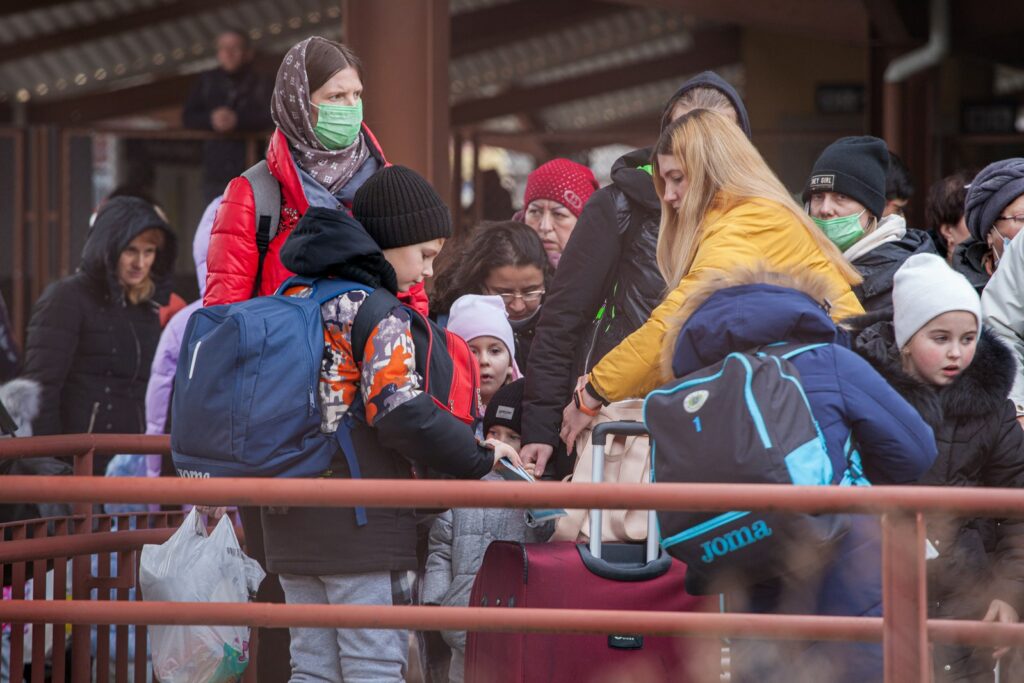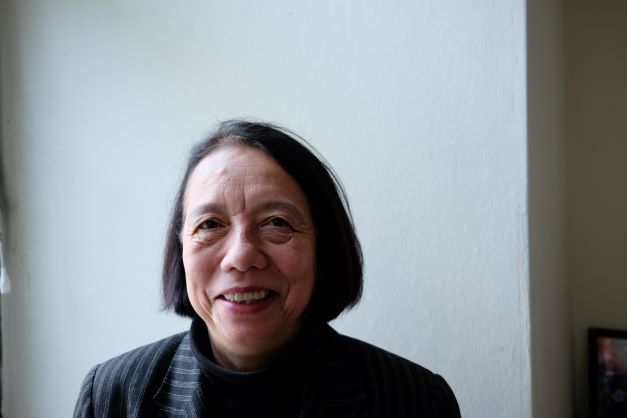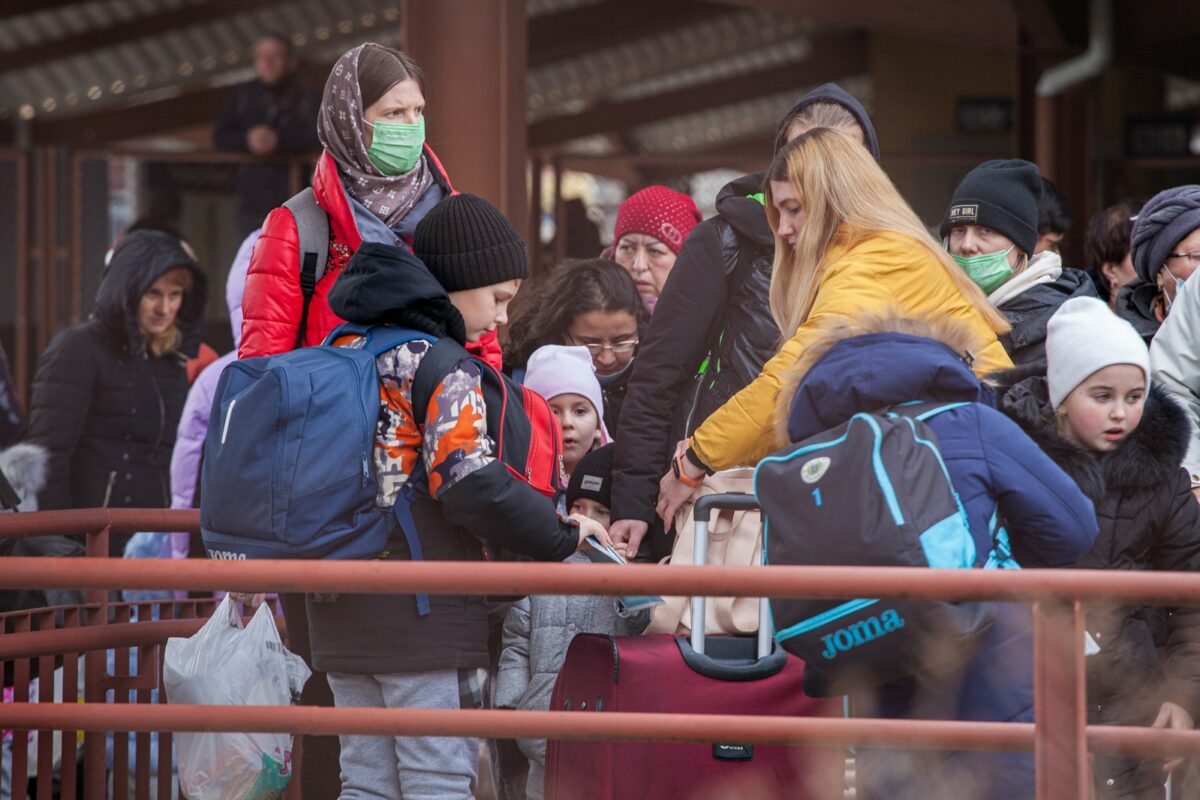
LeftEast is reprinting this important analysis by Monika Mokre on the contradictions of the EU’s refugee policy, in light of the current Russian aggression in Ukraine. The piece originally appeared on the Refugee Outreach and Research Network (ROR-n) website.
It was at the end of the 1990s when the EU once again realized that it was not able to act unilaterally and in solidarity in times of crisis. While this had already become obvious regarding the war in Bosnia and the genocide there, the Kosovo crisis, and the influx of refugees due to it was another case in point. Basically, these and other failures showed that, after then 50 years of European integration, nationalism of the Member States still prevailed.
Thus, in 2001 the “Temporary Protection Directive”[1] was issued. In its contents, it provides a pragmatic and effective solution for times in which the asylum systems of Member States are overwhelmed by the number of refugees. For a period of one to three years, those concerned by the directive shall hold a residence permit including the right to accommodation, health services, social services, education, and access to the labour market. In order to distribute the burden of this situation, displaced persons can be transferred between Member States if the respective Member States as well as the persons concerned agree.
In its procedures, the Directive follows the usual legislative procedure of the EU: the existence of a mass influx of refugees has to be established in a proposal by the Commission which is then decided upon by the Council of the European Union with qualified majority voting (i.e., a majority of states representing a majority of the population of the EU).
Until early March 2022, the Directive has never been used in the more than 20 years of its existence although its implementation was discussed three times: In 2011, Italy and Malta called for its activation due to the high influx of refugees in the aftermath of the Arab Spring, especially from Libya. In the crisis of 2015, UNHCR and some Members of the European Parliament proposed to make use of it. And in 2021, EU foreign policy official Josep Borrell discussed the possibility of invoking the directive to aid Afghan refugees following the US withdrawal from Afghanistan. In none of these cases, the European Commission saw the need for a proposal, probably due to the resistance of those Member States not directly affected by the situation.
Due to its obvious dysfunctionality, the Commission proposed in 2020 to repeal the directive and to replace it by a regulation[2] as part of the foreseen “Pact on Asylum and Migration”. This directive could be implemented by the Commission without inclusion of the Council and would focus on the respective Member State facing a mass influx of refugees.
The regulation would allow for temporary protection without asylum procedures as well as for increased possibilities for asylum procedures at the border. These accelerated asylum procedures at the border form a prominent and highly problematic part of the foreseen pact. Inter alia, it is foreseen that “in normal times”, persons from a country with less than 20% positive asylum decisions (in EU average) can be rejected in such a fast-track procedure. According to the directive, in times of crisis, persons from a country with less than 75% positive asylum decisions could be rejected at the border.
The regulation also refers to general solidarity measures according to which Member States have either to accept a certain number of asylum seekers (calculated on the base of population and GDP) or deliver a financial contribution, the latter inter alia on the base of “return sponsorships”, i.e., organizing and financing voluntary or involuntary return to the country of origin.
As the whole “Pact on Asylum and Migration”, this regulation has not been issued yet. Instead, the Directive of 2001 has been activated for the first time in its history and in an incredibly short time. For once, the EU has shown an ability to speak with one voice, overcoming at this point the nationalism of the Member States. It is easy to understand the reasons for this unprecedented situation. First, an external enemy has always been the most effective means to create and re-enforce a feeling of collective identity. Even the preamble of the Council Decision refers to the invasion undermining “European and global security”. Second, this new influx of refugees concerns first and foremost those countries who have always been opposed to every form of EU solidarity in accepting refugees, i.e., the Višegrad states Hungary, Poland, Czech Republic, and Hungary as well as Austria.
Thus, while it is laudable and of utmost importance that Ukrainian citizens will be able to enjoy temporary protection in the EU, the most recent EU policies do not show a rejection of nationalist principles but, rather, a new application of them, enlarged by EU supra-nationalism. Again, EU refugee politics do not focus on people in danger but on its own interests. For the time being, these interests have shifted – from a general rejection of refugees to the protection of a specific group of refugees.
And this group is very specific. It includes Ukrainian citizens, persons under international protection in Ukraine and the families of these two groups. Persons with a permanent residence in the Ukraine who “are unable to return in safe and durable conditions to their country of origin” should also get protection – either according to the Council Decision or in another national form. Persons with a temporary residence in Ukraine not able to return to their country of origin – e.g., students or workers, but also asylum seekers – may be granted protection according to the Decision. The – legally not binding – introduction to the Decision recommends that they should at least be allowed visa free entry in the EU in order to return to their country of origin. People with a – permanent or temporary – residence in the Ukraine who could return to their country of origin without being in danger are not mentioned at all.
The proposal of the Commission went beyond the very narrow scope of the final decision: it included everybody “unable to return in safe and durable conditions to their country of origin” as well as everybody with a long-term stay in Ukraine, irrespectively of the conditions in the country of origin.
This would have made a significant difference as many inhabitants of Ukraine do not hold Ukrainian citizenship. There were 76.000 foreign students in Ukraine, nearly a quarter of them from Africa. And as I am writing this, there is increasing information about BIPoC[3] hindered to leave Ukraine or to enter another country, especially Poland. In both these countries, fascist groups have been active for a long time and continue to be very present. Also, people who transported BIPoC to the EU face police persecution due to human trafficking.
It should also be mentioned that about 400.000 Roma who live in Ukraine also face racist discrimination including fascist attacks when trying to cross borders. Furthermore, according to UN figures, about 30.000 of them do not have documents; thus, their chance of being accepted under the conditions of the directive are slim[4].
Finally, it remains to be seen how the mass influx of refugees from Ukraine will affect those from other countries asking for asylum in the EU. Especially in this regard, it is important that the directive is still in force and not the foreseen regulation. If all asylum seekers from countries with less than 75% of positive decisions were subjected to the fast-track procedure, only people from Venezuela, Syria, and Eritrea would have a chance for a proper asylum procedure. But also without these stipulations, more and more asylum claims have been decided negatively after a very superficial assessment of flight reasons even before the war – at least in Austria.
People are dying in the war in Ukraine – people from different nationalities, including from the Russian Federation. People are fleeing to save their lives – people living in the Ukraine and also Russian citizens opposed to the war. These people must be protected – this is enshrined in the Declaration of Human Rights, the Geneva Convention and the European Charter of Fundamental Rights, irrespectively of their nationality, ethnicity, gender, class etc.
There is no doubt that the decision to activate the Directive on Temporary Protection is an important step here. But there is also no doubt that the limitations of this decision contradict these fundamental principles and are driven more by nationalist and supranationalist concepts and interests than by a truly universal understanding of human rights – including the rights of those who, out of which reason ever, are not residents of the country of which they hold the citizenship. The European Union understands the “four mobilities” including mobility of persons, as one of its most important values and achievements. But when it comes to the protection of refugees and the rights of migrants in the EU, individual mobility leads to exclusion. Third country citizens in the EU lose their right to citizenship in a Member State when they spend some time in another Member State. Afghan refugees who spent their whole life in Iran do not receive protection as they are not persecuted in their country of origin. And now, the Council of the European Union simply ignores the plight of those who decided voluntarily to make Ukraine their new home.
Probably, its limited approach made it possible to implement the directive without protest of right-wing parties. In this vein, the Austrian right-wing party FPOe recently published the slogan: “War refugees, yes, hidden mass migration, no.” And in social media, those usually opposed to any kind of protection for people on the move welcome Ukrainian refugees as they are “white and our European brothers and sisters”.
Maybe one should mention at this point that the full-hearted acceptance of Ukraine as a part of Europe is a rather recent development directly related to the definition of a common enemy. Up to now, it has, e.g., not applied to the many exploited Ukrainian workers in EU agriculture.
And, maybe one should also mention that in the same week that Russian forces entered Ukraine, the US launched airstrikes in Somalia, Saudi Arabia bombed Yemen, and Israel struck Syria and Palestinians in Gaza. We did not hear much about that.
Notes:
[1] Council Directive 2001/55/EC of 20 July 2001 on minimum standards for giving temporary protection in the event of a mass influx of displaced persons and on measures promoting a balance of efforts between Member States in receiving such persons and bearing the consequences thereof; https://eur-lex.europa.eu/LexUriServ/LexUriServ.do?uri=OJ:L:2001:212:0012:0023:EN:PDF
[2] Proposal for a Regulation of the European Parliament and of The Council addressing situations of crisis and force majeure in the field of migration and asylum, https://eur-lex.europa.eu/legal-content/EN/TXT/PDF/?uri=CELEX:52020PC0613&from=EN
[3] Black indigenous people of colour
[4] https://ukraine.un.org/en/106824-about-30000-roma-ukraine-have-no-documents-story-roma-activist.


